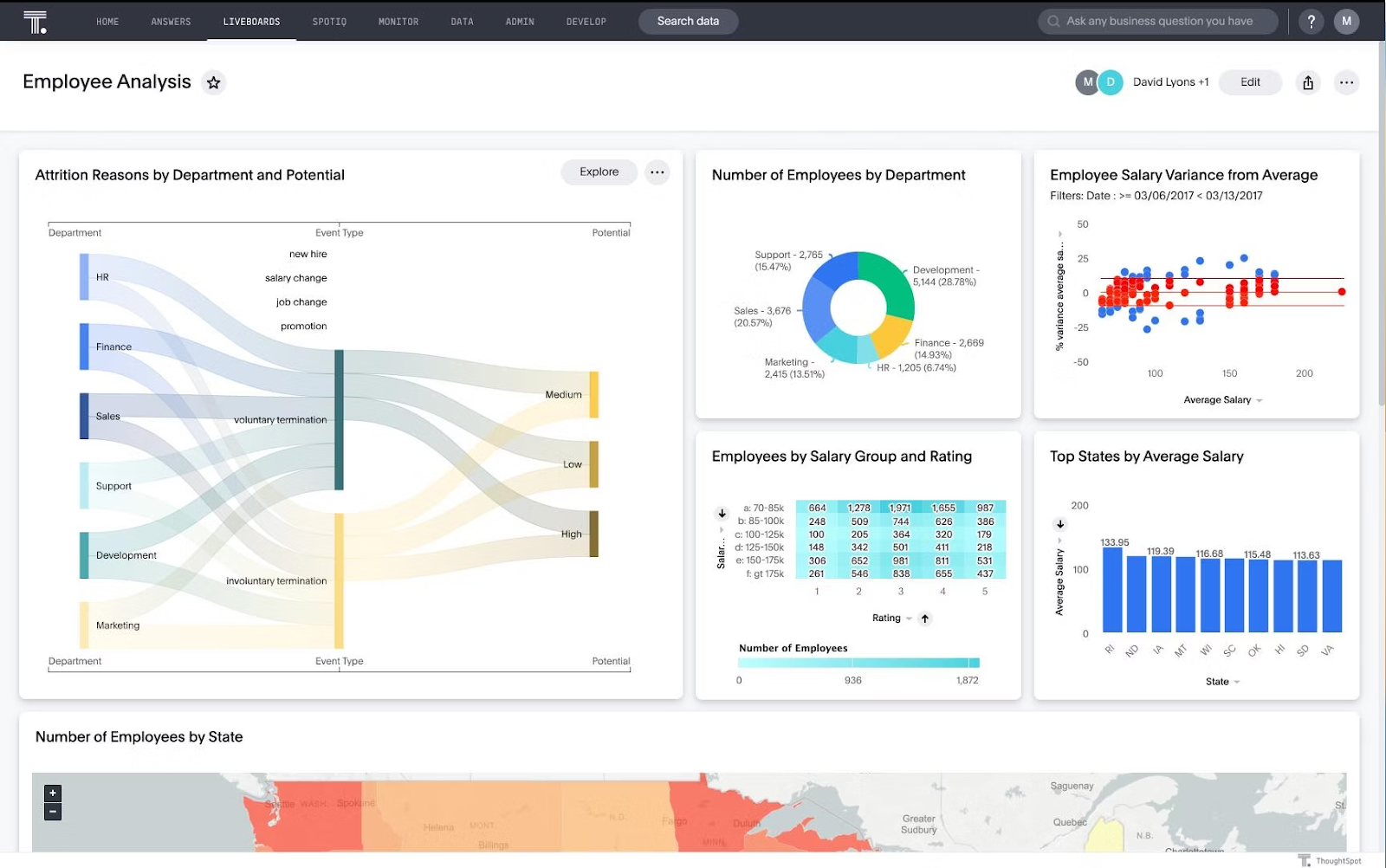As an HR professional, you understand the intricacies of managing a diverse workforce while striving to meet organizational goals. In a rapidly evolving landscape where talent is a key differentiator, how can you ensure your HR practices remain ahead of the curve?
According to a survey by Gartner, only 29% of HR leaders feel confident that their organization’s current processes are effective at helping employees achieve and sustain their best possible performance. This is where HR analytics can help. By leveraging the power of data, you're not just managing people; you're shaping experiences, optimizing processes, and driving organizational growth.
In this article, we'll explore the benefits of HR analytics, underscoring how it can revolutionize your organization's people strategy.
Table of contents:
HR analytics (also known as people analytics or workforce analytics), is the process of gathering, analyzing, and interpreting data related to human resources. This analysis gives you insights into your team and informs decision-making. Leveraging analytics techniques and technologies, your team can extract valuable information from various HR sources including employee demographics, performance metrics, recruitment data, and engagement surveys.

1. Enhanced employee insights
With HR analytics, you gain comprehensive insights into employee behavior, performance, and engagement, enabling you to tailor HR programs and initiatives accordingly. This deep understanding empowers you to anticipate employee needs, identify areas for improvement, and foster a culture of continuous growth and development.
2. Improved talent acquisition
By analyzing recruitment data and candidate profiles, HR analytics helps you identify top talent more effectively, streamline the hiring process, and reduce time-to-fill positions. Predictive analytics can also forecast future hiring needs and identify potential sourcing channels for attracting the right candidates.
3. Optimized performance management
HR analytics enables you to track and analyze employee performance metrics, identify high-performing individuals, and recognize areas for improvement. By leveraging data-driven insights, you can establish clear performance goals, provide targeted feedback, and facilitate more meaningful performance discussions.
4. Enhanced employee engagement
By analyzing employee engagement survey data and feedback, HR analytics solutions help you understand the factors driving employee engagement and satisfaction. You can identify key drivers of engagement, address underlying issues, and implement targeted initiatives to boost morale, retention, and productivity.
5. Strategic workforce planning
HR analytics facilitates strategic workforce planning by analyzing workforce demographics, skills inventory, and succession planning data. You can identify critical skill gaps, develop talent pipelines, and align your workforce with organizational goals and objectives.
There are several types of HR data analytics, each serving different purposes and providing valuable insights for organizations:
Descriptive analytics: Descriptive analytics involves summarizing historical HR data to provide insights into past trends, patterns, and relationships. It utilizes basic statistical analysis, data aggregation, and visualization techniques to present a meaningful view of your HR metrics.
Diagnostic analytics: Diagnostic analytics goes beyond describing what happened to understanding why certain HR events occurred. It involves identifying root causes and contributing factors behind specific trends or anomalies in HR data.
Predictive analytics: Predictive analytics uses historical HR data to forecast future outcomes and trends. It employs statistical modeling, machine learning algorithms, and data mining techniques to identify patterns and relationships for making predictions about future HR events.
Prescriptive analytics: Prescriptive analytics goes beyond predicting future outcomes to recommending actions that should be taken to achieve desired HR objectives. It combines predictive models with optimization algorithms to determine the best course of action based on predefined business goals and constraints.
Real-time analytics: Real-time analytics involves analyzing HR data as it is generated in real-time to provide immediate insights and support decision-making processes. It is used for monitoring key HR metrics, detecting emerging trends or issues, and responding to dynamic workforce changes quickly.
Schneider Electric
When Alanna Roesler joined Schneider Electric, she aimed to make a difference through people analytics. With ThoughtSpot, she helped teams find instant insights from data, giving Alanna the ability to answer questions like “what areas of the business are thriving with the diverse hiring practices.” Using these insights, Schneider Electric was able to pinpoint effective recruitment channels, hiring strategies, and talent development initiatives that resulted in refined hiring practices, a more inclusive workplace culture, and positive business outcomes. As an added bonus, Alanna's transformative work led to a well-deserved promotion.
ADP
In an episode of The Data Chief, former CDO of ADP, Jack Berkowitz, highlighted the power of analytics in addressing pay disparities and driving data-driven decision-making within the organization.
Specifically, Jack discussed ADP's analysis of national payroll data related to military personnel and veterans. Their analysis revealed a substantial pay gap. Leveraging these insights, they developed a SaaS application enabling businesses to scrutinize and address compensation disparities.
Kraft Heinz
In another episode of The Data Chief, Serena Huang, former Global Head of People Analytics at the Kraft Heinz Company talks about how she retained top talent using people analytics.
“Don’t start with data, start with the problem that you want to solve. If you have a retention problem, you want to look at your turnover data for employees. You don’t boil the ocean and try to make sure every single data element in your system is accurate, but you focus on the turnover issue at hand.”
HR analytics is no longer a nice-to-have but a strategic imperative for organizations looking to thrive in a competitive marketplace. ThoughtSpot AI-Powered Analytics is tailored for HR, empowering organizations to unlock the full potential of their people strategy.
Ready to transform your HR practices with data-driven insights? Schedule your ThoughtSpot demo today!








